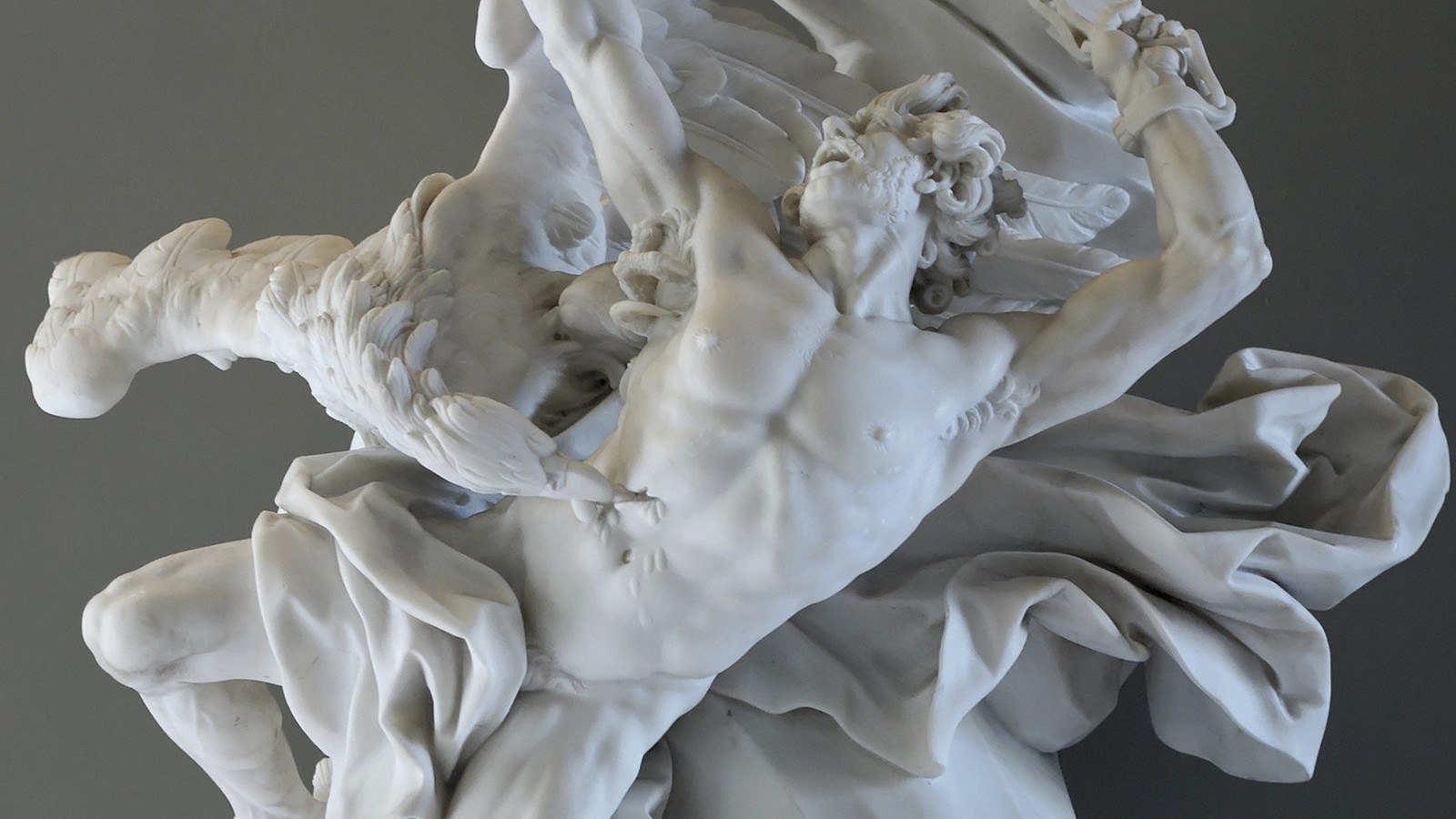In 1800, around the time of the premiere of his First Symphony, the 29-year-old Ludwig van Beethoven received a commission to write music for a ballet based on the Prometheus myth. Beethoven’s collaborator and librettist was the the Italian choreographer and dancer, Salvatore Viganò. Although Viganò usually composed the music for his ballets himself, this occasion was far too important. The Creatures of Prometheus, a “heroic and allegorical ballet” in two acts, would be presented to the Archduchess Maria Theresa at the Vienna Court Theatre (Burgtheater).
To Beethoven’s disappointment, the scenario omitted the more dramatic elements of the Prometheus story, in which the Titan and supreme trickster steals fire to give to humanity in defiance of the gods and is sentenced by Zeus to eternal torment on a rock frequented by a hungry eagle. Viganò considered this part of the story to be too edgy for an aristocratic audience. The following synopsis appeared in the handbill for the ballet’s first performance on March 28, 1801:
The Greek philosophers describe Prometheus as a lofty soul who found the people of his time in ignorance, refined them by means of science and the arts, and gave them manners, customs, and morals. As a result of that conception, two statues that have been brought to life are introduced into the ballet, and these through the power of harmony, are made receptive to all the passions of human existence. Prometheus leads them to Parnassus, in order that Apollo… may enlighten them. Apollo gives them as teachers Amphion, Orion, and Orpheus for music; Melpomene to teach them tragedy; Terpsichore and Pan the Shepherds’ dances; and Bacchus the heroic dance.
The Creatures of Prometheus ran successfully for 28 performances. Yet, one influential critic found Beethoven’s music to be “too intellectually demanding” for ballet, and not suitable for dancing. Beethoven provided sixteen numbers for the ballet, including a finale which would later form the basis of the theme-and-variations final movement of the Eroica Symphony.
The Overture remains the score’s most often-performed music. It begins with arresting chords which land with the force of Zeus’ thunderbolts. As with the opening of the First Symphony, these chords form a searching cadence which arrives out of nowhere. The Adagio introduction continues as a warm, majestic march, propelled by solemn timpani beats. Suddenly, the Allegro molto con brio (“with much vigor”) springs to life with running eighth notes in the violins. It is exuberant, celebratory music which foreshadows the ballet’s final scenes. Filled with wild, jagged accents and sudden dynamic changes, the Prometheus Overture unfolds as an exhilarating, boisterous musical joyride.
Recordings
- Beethoven: The Creatures of Prometheus Overture, Op. 43, Riccardo Chailly, Gewandhausorchester Amazon
- Leonard Bernstein and the Vienna Philharmonic
- Nikolaus Harnoncourt and the Chamber Orchestra of Europe
Featured Image: Prométhée enchaîné (Prometheus Bound), Nicolas-Sébastien Adam

